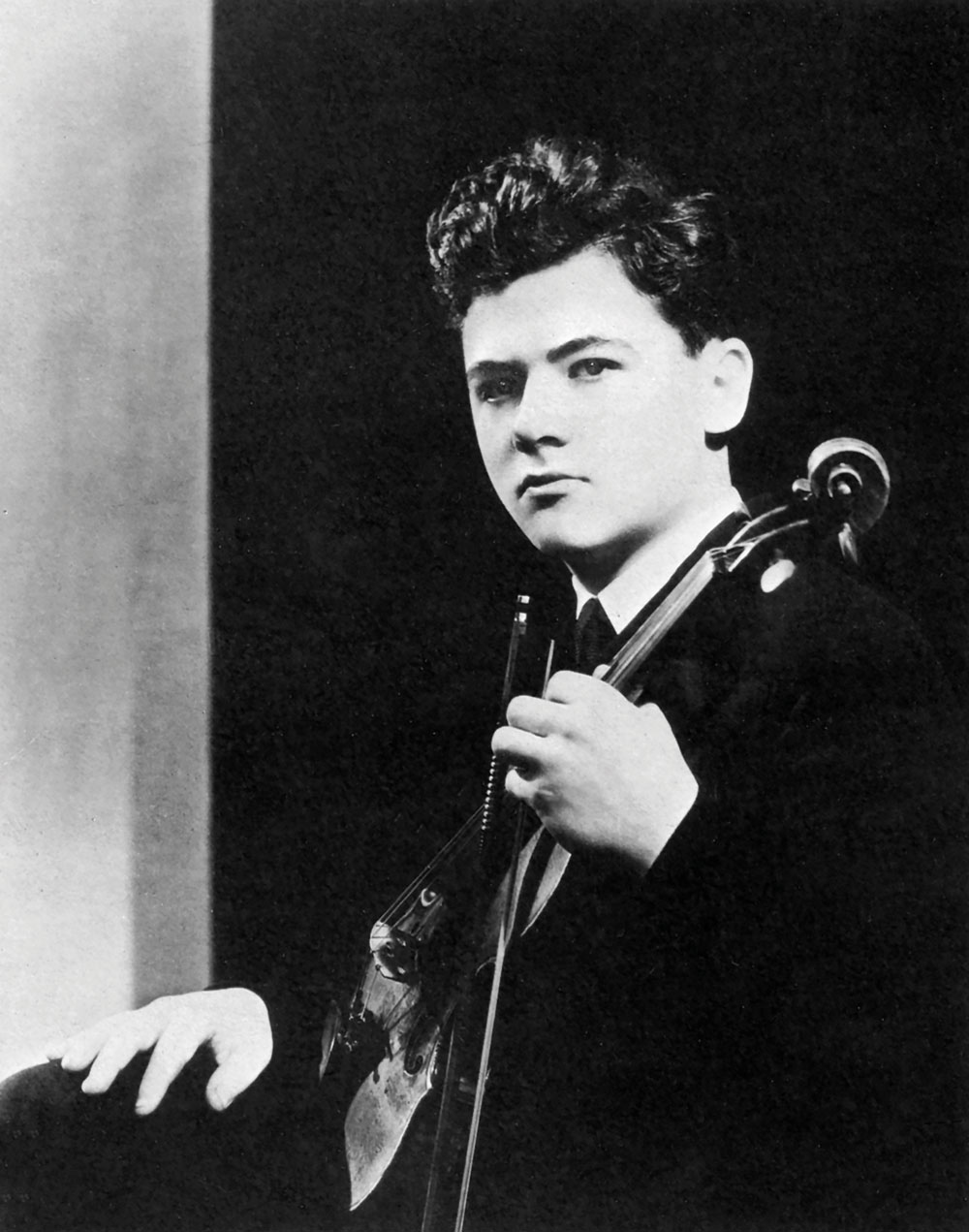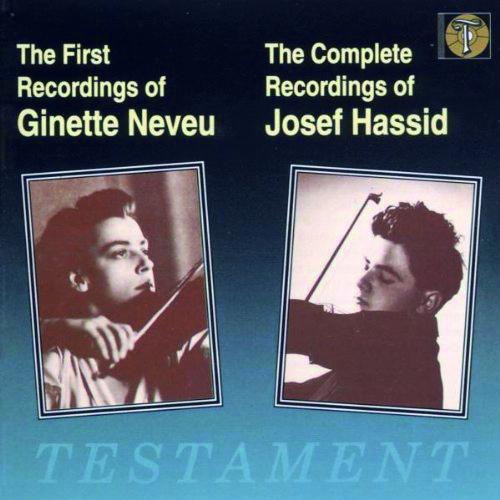Icon: Josef Hassid
Gramophone
Thursday, October 10, 2019
Tully Potter memorialises the brilliant Polish violinist who suffered family tragedy as a child and at an early age succumbed to a severe mental disorder which led to his untimely death

The catastrophic loss of a young musician is always traumatic, but the case of violinist Josef Hassid is so extreme, so full of ‘What if … ?’ moments, that I feel his loss keenly. Extravagant claims of incipient greatness were made for the teenaged Hassid (Fritz Kreisler said that such a violinist was born only ‘every 200 years’), but the boy collapsed into mental illness, leaving us just nine 78rpm sides. He inspires admiration for his artistry but also sympathy for his lost childhood and the suffering of his final years.
Born Józef Chasyd in northern Poland in 1923, he lost his mother at the age of 10. In 1934 his father, Owsiej, took him to Warsaw to study at the Chopin School of Music with Mieczysław Michałowicz, a nurturer of young fiddlers such as Bronisław Huberman, Szymon Goldberg, Ida Haendel and Roman Totenberg. Hassid also had tuition from Irena Dubiska, who assisted the ageing Michałowicz.
With no mother, Hassid was at the mercy of his pushy father. In her memoirs, Haendel depicts the latter as ‘a strange man, short and thin, with small, deep-set black eyes which glinted maliciously’. In 1935 Hassid entered the first Wieniawski competition, held in Warsaw in an anti-Semitic atmosphere that led to David Oistrakh coming second to Ginette Neveu; but he received just a diploma after suffering a memory lapse.
In 1937, Huberman arranged for Hassid to attend Carl Flesch’s summer course at Spa, Belgium, and the following year the Hassids followed Flesch to London. As Josef had been given an exceptional technical foundation in Warsaw, Flesch concentrated on interpretation and musical development. On March 9, 1938, ‘Yossef Hassid’ played with the pianist Ivor Newton at a soirée at a private house in Hampstead. More performances followed, usually well reviewed, but early in 1941 the diminutive, chubby, cheerful teenager familiar from photos retreated into a private hell of schizophrenia.
‘Surely he should have been channelled into chamber music, where he would not have needed to memorise’
It seems Hassid cracked under multiple pressures, the first being an unhappy love affair: during the 1937 summer course he had fallen for a non-Jewish girl, and both his father and her parents forbade the youngsters to see each other again. There was pressure from his father to succeed as a violinist: the two were constantly together, so Josef had no escape. A well-meaning sponsor agitating for more concerts made things worse. He was expected to memorise his repertoire, yet clearly had a poor memory. More pressure came from being shown off by Flesch, like a pet poodle, to a stream of great musicians. Finally, I believe Flesch’s teaching was partly to blame.
Successful Flesch pupils have pooh-poohed this idea, but then they would – they thrived on his system, whereas a few buckled. Consider Hassid’s namesake Joseph Segal, a brilliant prospect from Palestine. He earned the praise of Sir Adrian Boult, who rehearsed the Beethoven Violin Concerto with him and the BBC SO as part of the 14-year-old’s first prize in the 1938 British Empire Violin Competition (at least one member of the orchestra confused him with Hassid, which shows how good Segal was). But Segal could not take Flesch’s method of making every lesson a public concert and delivering caustic comments. Adolf Busch pieced together Segal’s shattered ego and in 1947 he settled in Britain, known to a few as a fearsome fiddler, but happier teaching.
Surely Hassid should have been channelled into chamber music, where he would not have needed to memorise. In a quartet he might have prospered.
Our shreds of consolation are the records, which are really worth hearing. Best is the 1939 test record (with Newton at the piano) of Elgar’s La capricieuse, with superb staccato, lovely tone, a model vibrato, delectable double-stopping and a nonchalant ending. The official 1940 version is more polished, less carefree – and rather pulled about. Tchaikovsky’s Mélodie has a splendid trill sequence and he catches its wistful mood. Two Sarasate Spanish dances are fine: the Zapateado with perfect harmonics, left-hand pizzicato and staccato; the Playera with sultry rhythm. Kreisler’s Caprice viennois features a fine glissando, terrific double-stops, good rhythm and a faster section tossed off with ease. Achron’s Hebrew Melody, a bit fulsome, is deeply felt; difficulties are well surmounted although trills are a little tight; the faster passage is easily played. The Dvořák-Kreisler Humoreske, featuring a misreading, is beautifully played, including the double-stops. The Méditation from Thaïs is not very French (the G string sounds too lush), but overall is pleasing.
In a Gramophone interview (4/73) Gerald Moore called Hassid ‘the greatest instrumental genius I’ve ever partnered’, going on to say: ‘I don’t know how to explain his incandescence. He had technical perfection, marvellous intonation, glorious tone – but there was something above that which was quite incredible, a metaphysical quality.’

Essential Recording
‘The Complete Recordings’
Josef Hassid vn Gerald Moore and Ivor Newton pf
Testament (9/87)
Abbey Road, London, 1939-40
This article originally appeared in the 2018 Awards issue of Gramophone. Never miss an issue - subscribe today!
Defining moments
1923 – Birth of a prodigy
Born December 28 in Suwałki, Poland, the third of four children of Jewish parents; shows great promise under a local violin teacher.
1939 – First record leads to the rest in close succession
At Fred Gaisberg’s behest, makes a test record of Elgar’s La capricieuse with Ivor Newton at Abbey Road Studios on January 9. In June and November 1940, eight sides, including a repeat of the Elgar, are produced by Walter Legge.
1940 – Debuts in London
Makes his public debut on April 3 at Wigmore Hall with Gerald Moore. Three weeks later, on April 25, makes his orchestral debut at Queen’s Hall in the Tchaikovsky concerto with the LPO under Grzegorz Fitelberg, but has a memory lapse.
1941 – Hospitalised
Violent mood swings. Withdrawn. Does not recognise friends. Rejects violin, father – even his faith. Enters St Andrew’s Hospital, Northampton. Discharged in 1942, but in December certified insane, ending up in Long Grove Hospital, Epsom.
1949 – Final deterioration
Father’s death from cancer causes deterioration. On October 20, 1950, given a bilateral prefrontal leucotomy (lobotomy). Develops infection leading to meningitis. Dies on November 7, aged 26.











